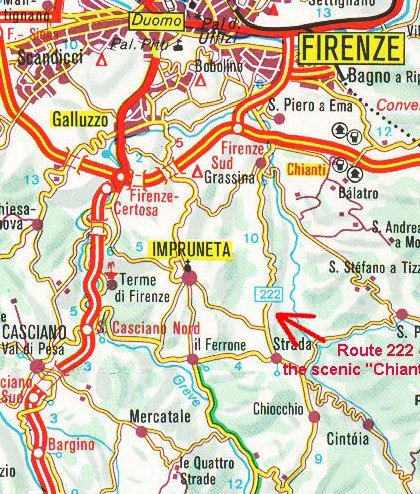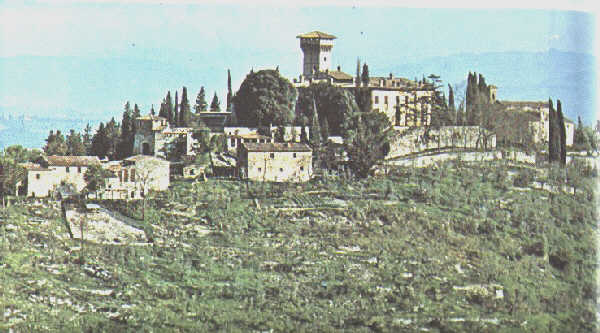A simple pages and pictures
ensemble
to show you some of the unknow resources
of the gorgeous Chianti
Some idea for travelling for pleasure on holiday in the Chianti region
Chianti': "A vast, nountainous,
wooded and rough area celebrated for its wines, the salubriousness of its climate
and its geographical position. No author has so far indicated the boudaries and
extension of Chianti". Those words were written by Emanuele Repetti in his
excellent Dizionario geografico fisico storico, which was published in 1833.
Today, more than 150 years later, the problern of identifytng the Chianti.
territory seems to be even more complicated due to developments since Repetti
day, which are best viewed within a context that extends back to the Middle
Ages.
1) The name Chianti. appeared for the first time in some documents of the second
half of the l3th century
2) About the rniddle of the 14th century, the coat of arms of the league of
Chianti, which was under Florence
jurisdiction,
displayed the insignia of three communities: Castellina,
Radda and Gaiole.
3) A decree of the Grand Duke of tuscany of 1716, anticipating by 200 years all
other initiative of the kind, established the boundaries of the Chianti wine
production zone.
4) In 1924, a group of producers in the area delineated by the ducal decree
founded the Consortium for the Defense of Chianti Wine for the purpose of
assuring the integrity of their product. Later, the organization became the
Chianti Classico Wine Consorfitun.
5) A law passed in 1932. definitively declared that the wine producing area
consisted of 70,000 hectares. (172,900 .acres) between Florence and Siena
that included all the commuunal territories of Castellina, Radda, Gaiole and
Greve and parts
of those of San Casciano, Barberino, Tavarnelle and Castelnuovo Berardenga; as
well as a small slice Poggibonsi district.
If the matter had ended there, the identification of Chianti Classico, referring
to the wine, with Chianti Classico, rneaning the territory, would be of interest
only of a small cluster of semanticists.
After all, the zone VitiVinicultural image was constructed and promoted
throughout the world by the prducers and their Consortjum. Since that image
later came to be extended to the territorritory contributing to the area's
appeal to tourists of substantial means, the equation of Chianti with Chianti
Classico is valid. The hotels came after, not before the wine estates. However,
the situation was complicated by the law enacted in 1932 (and reinforced from
the vitivinicultural standpoint in 1967 and 1984) that identified six zones, in
addition to Chianti classico in which Chianti wine could be produced: Montalbano,
Colli Fiorentini, Rufina, Colli Aretini, Colline Pisane and Colline Pistoiesi.
Therefore, while the identification of Chianti with Chianti Classico may only
have disturbed some purists before 1967, it now poses a concrete danger of
creating a certain degree of confusion of the type envisaged in the theory of
the drawing power of the market. The attraction is a product of superior
quality. Someone in Milan who is uninforrned rnight have responded to a want ad
inserted in one of that city's daily newspapers (last February), in whých a
farmhouse in Chianti that must be remodeled was offered for sale, without
realizing that the province of Arezzo is not in Chianti.

The SS 222 climbs right up to Chiocchio and descends to Bolle, passing in front of the villas of Vicchiomaggio and Verrazzano, the birth place of the navigator Giovanni da Verazzano the decrouver of the bay of New York.
